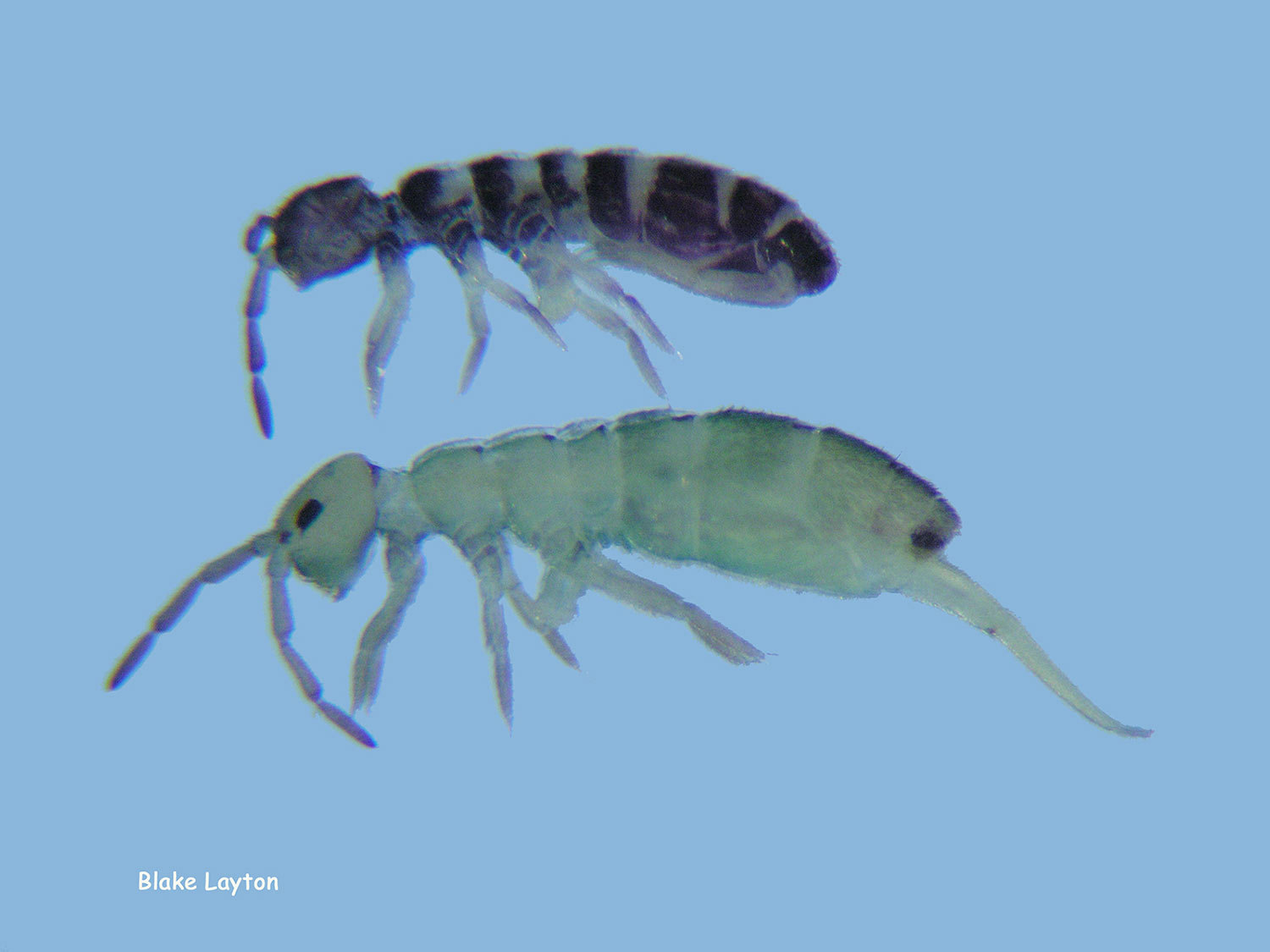Springtails Vol. 5, No. 4

Springtails
Many species
Class: Entognatha
Springtails used to be insects, but not anymore. Much like Pluto got demoted from being a planet, springtails have been removed from the class Insecta—for not holding their mouth right. They are now placed in the class Entognatha, because their mouthparts are internal, or retracted inside their head.
Springtails are common inhabitants of leaf litter, mulch, soil and similar moist environments where they feed on mold, algae, and other organic materials. There are many species, and they vary from white to dark gray in color, but all are small, about 1/20 to 1/10 of an inch. The most distinctive feature on most springtails is the furcula. This is a spring-loaded, tail-like structure they carry locked beneath their abdomen. When released the furcular snaps downward, propelling the springtail forward and upward in a jumping motion. In dead specimens, this may be locked underneath the abdomen or, if in the “fired” position, may look like a tail that extends away from the rear of the body (see photo). Some species do not have this structure.
Because they can jump, springtails are sometimes mistaken for fleas. Although they do not bite, springtails do occasionally build to such high populations that they become pests, simply because of the nuisance effects they cause. Heavy infestations sometimes occur in indoor settings, such as moist basements, or around interior planter boxes or potted plants. Because of their small size, springtails can readily make their way inside through window and door screens and through cracks and crevices. They can also be pests in outdoor settings, especially when large numbers occur in swimming pools or hot tubs.
Control: Insecticides are not especially useful for controlling springtails. Instead, control should focus on correcting the moisture problem that is allowing them to thrive. For indoor infestations, this could entail repairing structural or plumbing leaks, moving indoor potted plants—or at least watering them less, or improving exclusion around potential entry points. For outdoor infestations, control might include steps such as reducing mulch, raking leaves away from entry points into the house, reducing watering frequency, relocating water sprinkler heads, and other similar steps to reduce moisture and breeding sites.
Blake Layton, Extension Entomology Specialist, Mississippi State University Extension Service.
The information given here is for educational purposes only. Always read and follow current label directions. Specific commercial products are mentioned as examples only and reference to specific products or trade names is made with the understanding that no discrimination is intended to other products that may also be suitable and appropriately labeled.

